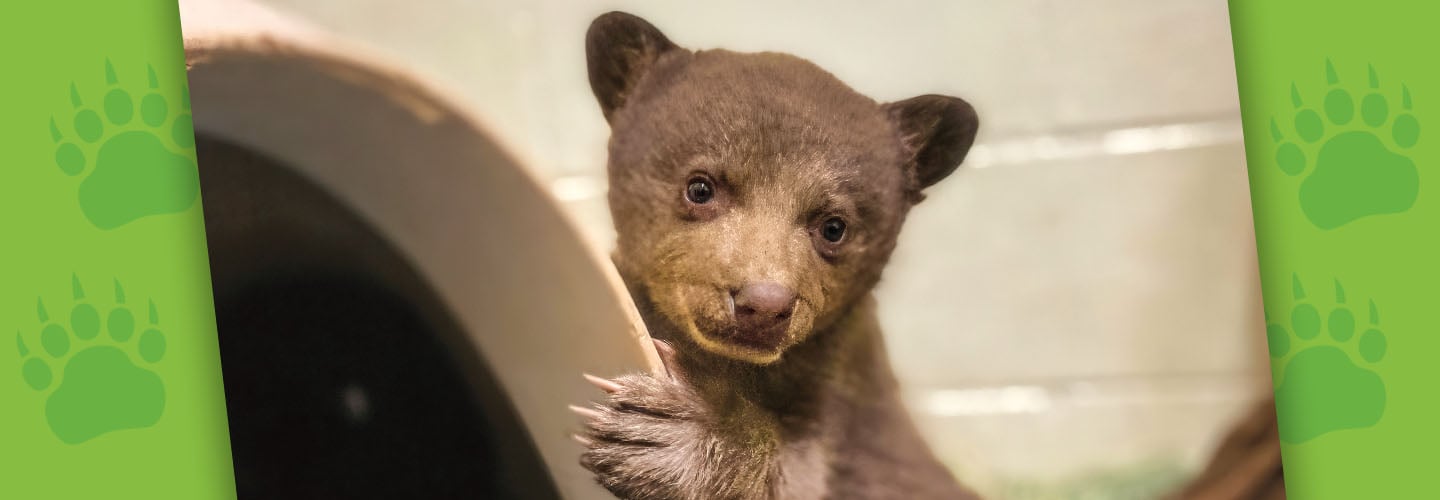This past April, a tiny black bear cub was crying in a California forest. The male cub was about 2 months old. He weighed just 3 pounds. He was hungry and alone.
Campers in Los Padres National Forest heard the cub’s cries. They called rescue workers, who searched the forest for the baby’s mother. But she was nowhere to be found.
Bear cubs depend entirely on their mothers for the first year of their lives. Mothers find food for their babies and teach them how to live in the wild. They also keep their cubs safe from hungry predators, like mountain lions and coyotes. Without its mother, a baby bear might not survive. What would happen to this tiny cub?
In April, a tiny black bear cub was crying. He was in a California forest. The male cub was about 2 months old. He weighed 3 pounds. He was hungry and alone.
Campers heard his cries. They were in Los Padres National Forest. They called rescue workers. The workers looked for the baby’s mother. But she could not be found.
Bear cubs depend on their mothers. Mothers find food for their babies. They teach the cubs how to live in the wild. They also protect the cubs from hungry predators. These include mountain lions and coyotes. Without its mother, a baby bear might not survive. What would happen to this tiny cub?

